
The entrance facade from a circa 1880 color woodblock print from "Morris's County Seats"
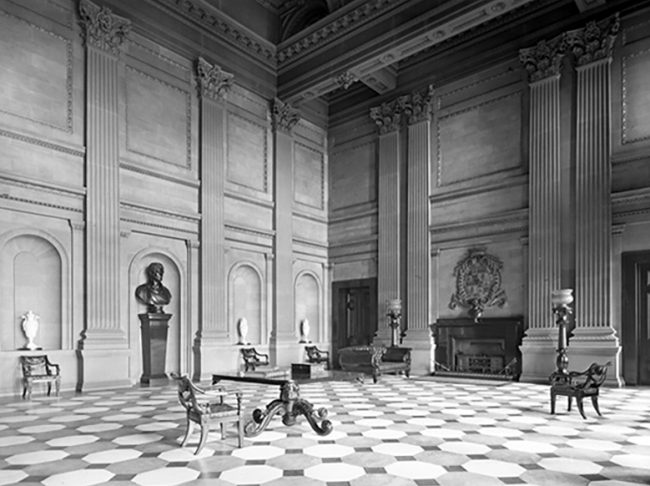
The Entrance Hall from a 1919 photograph

The staircase from a 1919 photograph

The Old Dining Room from a 1919 photograph

The Old Dining Room in the Museum of Fine Arts, Boston, in 2013.

The Long Gallery from a 1919 photograph
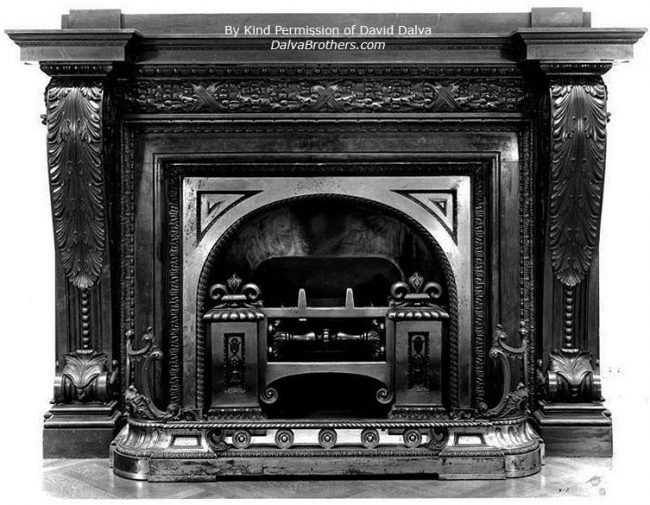
One of a pair of 1820-30 fireplaces from the Long Gallery. Courtesy of Dalva Bros., NYC.

One of a pair of 1820-30 fireplaces from the Long Gallery. Courtesy of Dalva Bros., NYC.
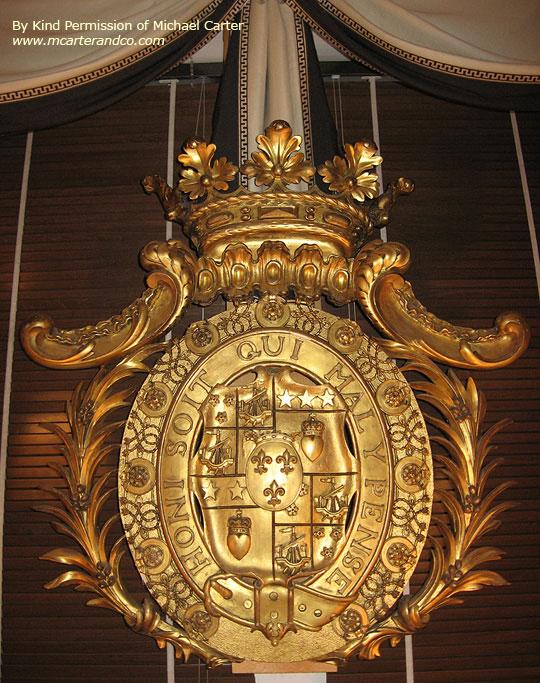
Carved and gilded wood crest of the 10th Duke of Hamilton's arms. This was probably mounted on a pier glass at Hamilton Palace. Today in a private Boston collection.
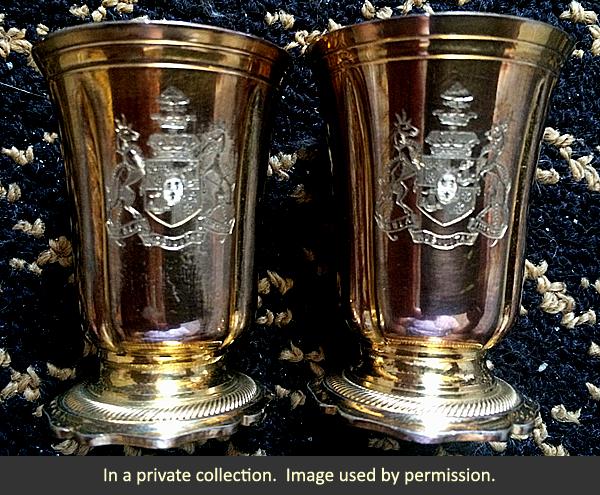
Small gold-plated cups with the coat of arms of the dukes of Hamilton
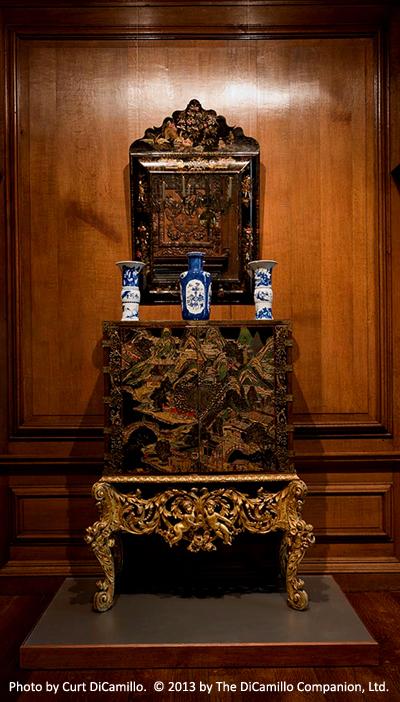
The east wall of the Old Dining Room in the Museum of Fine Arts, Boston, in 2013.

An early 19th century Baroque style carved giltwood center table by William Murray, Glasgow. Made for for the 10th Duke.

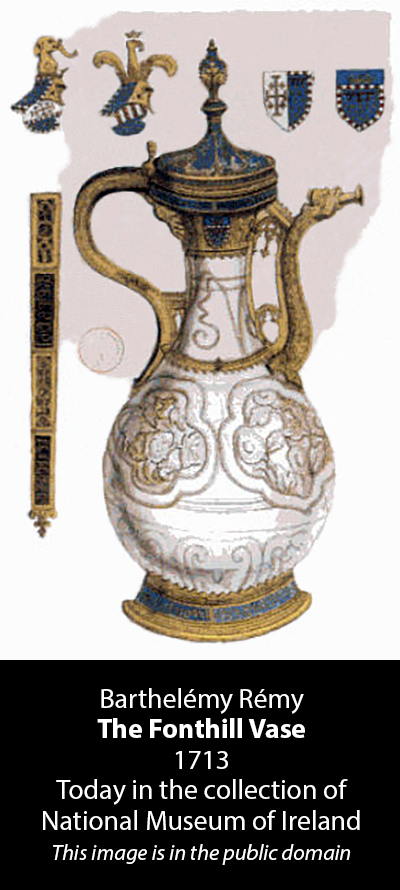
This is the earliest documented Chinese porcelain object to have reached Europe. This watercolor of the vase was made before it came into the ownership of William Beckford, after who it's named, and shows the vase with its earlier mounts (since removed) and armorials of Louis the Great of Hungary.
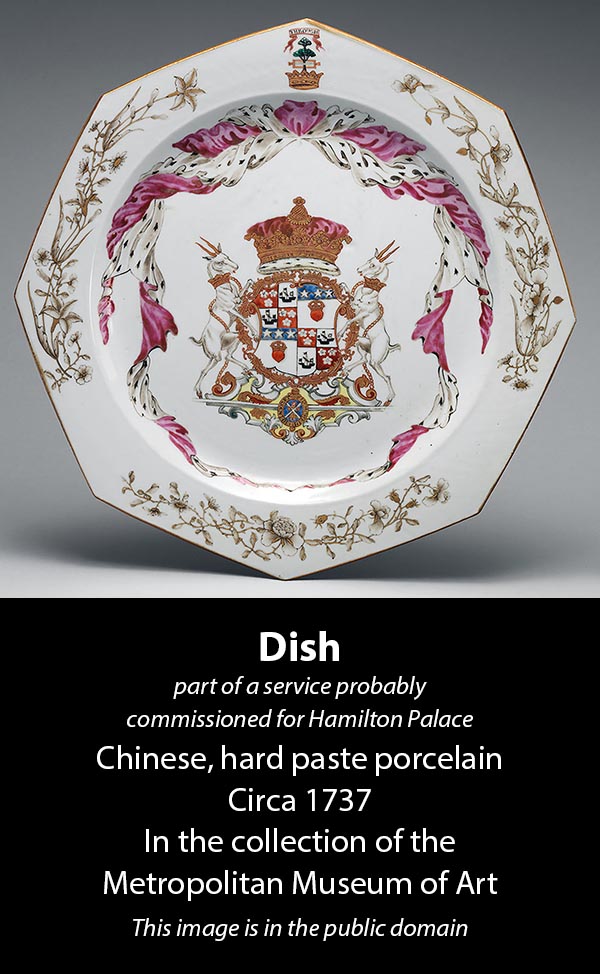

Fonthill Abbey, William Beckford's astonishing house, from whence many of Hamilton Palace's treasures came. This is an 1823 engraving of Fonthill from "The Mirror."

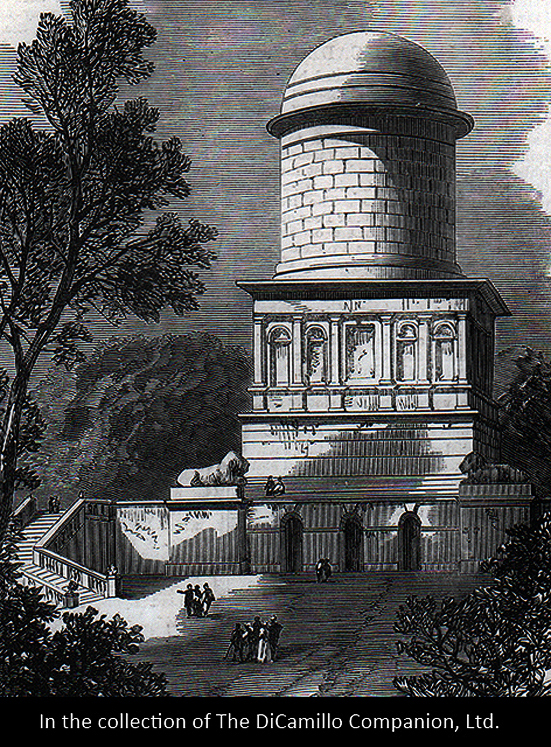
The mausoleum from an 1878 engraving
Earlier Houses: The palace was built on the site of a 13th century tower house, elements of which were probably incorporated into the great house.
Built / Designed For: 3rd Duchess of Hamilton
House & Family History: Hamilton Palace was the grandest seat in Scotland and once the largest private residence in the Western Hemisphere. The house, as completely realized in the 19th century, was begun for the 3rd Duchess of Hamilton in the late 17th century to the designs of James Smith. (The Hamilton dukedom is the third oldest in Britain, surpassed only by those of Norfolk and Somerset, and the senior title in Scotland, dating from 1643. The 1st Duke of Hamilton, a favorite of Charles I, led a Scottish army to England in 1643, was defeated by Cromwell at Preston, and beheaded.) In the 1840s the monumental north facade, with its grand portico of ten 25-foot-high columns, was erected for the 10th Duke by the architect David Hamilton. The interiors were noted for their sumptuousness, with exceptional stucco work and fine stone throughout. The palace's decline began in June 1882, when some of the choicest treasures were sold at a massive auction by Christie's, under the orders of William, the 12th Duke (1845-95), who was a notorious spendthrift. King George V and Queen Mary made a state visit to Hamilton Palace during World War I, when parts of the great house were used as a naval hospital. In 1919 the palace was discovered to be sinking due to mining subsidence (coal mines were tunneled directly beneath the house) and the decision was taken to demolish the palace, which took place during the 1920s. The remainder of the great ducal collection was auctioned by Christie's during a three-day sale in November of 1919. The London dealer Robersons purchased all the paneled rooms in the palace in 1920, subsequently selling them on to various clients. The only complete and assembled room to survive from the Hamilton Palace is the old (small) dining room, today installed at the Museum of Fine Arts, Boston. Elements of the drawing room from the palace are currently owned by the National Museums of Scotland. Several feet of wrought iron railing from the palace grounds can be seen today outside Hamilton College in South Lanarkshire. Some of the palace fittings are on view in the Low Parks Museum in Hamilton (the old palace coach house).
Collections: Hamilton Palace is famous for two spectacular sales, the first being the 17-day extravaganza conducted by Christie's in June of 1882, and the second, also by Christie's, a three-day auction in November 1919. The latter, which auctioned the remainder of the great ducal collection not sold in the 1882 sale, was necessitated by the imminent demolition of the great house. The catalogs of both sales are available on our site as PDFs, and be viewed by clicking on the "Related Resources" section of this record. The 1882 catalog is annotated with the prices realized and each buyer's name. In the early 19th century George Watson Taylor formed an important collection at Erlestoke, Wiltshire, of pictures, porcelain, and French furniture, including a matching lacquer commode and secretarie by Jean-Henri Riesener (William Beckford considered Erlestoke's collection better than his own at Fonthill). Taylor was declared bankrupt in 1832, with debts of £450,000, and a sale of the collection of Erlestoke (sold in 3,572 lots) took place the same year. The Riesener commode and secretarie, made for Marie Antoinette and installed in grand cabinet Intérieur at Versailles (later moved to the queen's rooms at her summer palace, Château de Saint-Cloud), were purchased by the 10th Duke of Hamilton for Hamilton Palace. During the sale of the contents of Hamilton Palace in 1882 the commode and secretarie were purchased by Mrs. William Kissam Vanderbilt (mother of the famous Consuelo Vanderbilt); they passed by bequest to the Metropolitan Museum of Art in 1920, were they remain today (the Met's James Parker called the pieces "two of the most splendid pieces of French furniture ever created..." in the 1996 book "Period Rooms in the Metropolitan Museum of Art"). An exceptionally fine French lit à la duchesse en imperial (full-size domed canopy bed), made in Paris circa 1782-83 by Georges Jacob, is also today in the collection of the Metropolitan Museum of Art. The carved, painted, and gilded bed has Beauvais hangings designed by Jean-Baptiste Huet and woven between 1782 and 1783. The carving, by an unknown artist, is in a floral motif and is of a uniformly high quality. The bed was last documented in France in 1791, when it was in the large bedchamber of the Hôtel de Belle Isle, the Paris home of Guyonne-Marguerite de Durfort de Lorge, Duchesse de Choiseul-Praslin (1737-1806). During the revolutionary fervor that shook France in the early 19th century the bed was sold repeatedly, finally being purchased in 1830 in Paris by the 10th Duke of Hamilton, who installed it in the state rooms at Hamilton Palace. The duke's grandson, the 12th Duke, sold the bed, together with much else, at the great Hamilton Palace sale of 1882. After passing through the hands of a number of dealers, the bed was acquired in 1897 by the financier George J. Gould (son of the famous robber baron Jay Gould), whose wife, Edith Kingdon, used it in the bedroom of their New York City townhouse. Kingdon Gould, Edith's son, gifted the bed to the Met in 1923 in memory of his mother. A large, early 19th century Baroque style carved giltwood center table (see photo in "Images" section), made in Glasgow by William Murray for the 10th Duke of Hamilton, was sold in May 2016 by the Philadelphia auction firm of Freeman's. The table was commissioned by the duke as a stand for a prized pietra dura top. The table was described in the 1852-53 Hamilton Palace inventory as "a large and splendidly Carved and gilt Table with Pietra Dure Top inlaid with rare marbles and precious stones &c," and further in the 1876 inventory as "A Magnificent Pietra Dura Table 8 ft 2 by 4 ft on a Handsomely Carved & Gilt Frame." The table was sold as lot 666 in the famous Hamilton Palace sale of June 1882, where it was recorded as being sold to a dealer named Duncan for £105. It was then acquired by the politician Christopher Beckett-Denison to furnish his new house at 41 Upper Grosvenor Street, London. Beckett-Denison died only two years later; the table was again sold at the Christie's sale of his collection on July 15, 1885, lot 333. It was described in that catalog as "AN OBLONG TABLE, of old Florentine pietre dure mosaic, of unusual dimensions, on boldly carved and gilt stand with trusses and stretcher -8 ft. 2 in. by 4 ft/From Hamilton Palace." The table then passed, in the 1950s, into the collection of Belcourt Castle, Newport, Rhode Island; it lastly entered a private collection in Newport before its 2016 sale. A solid gold teapot and stand (with fruitwood handle and bone finial) by Robert Sharp and Daniel Smith, made 1785-86, is today in the collection of The Barber Institute of Fine Arts, Birmingham. The teapot was made for Beckford and is engraved with his arms and those of his wife, Lady Margaret Gordon, and was in his collection at Fonthill Abbey and at Lansdown Crescent in Bath. Gold objects from this period are exceedingly rare (utilitarian objects like this teapot are virtually unknown, largely because the softness of the gold makes them impracticable) and are mostly confined to racing trophies and other presentation pieces. It is virtually impossible to tell this teapot from teapots of the same style produced in silver gilt; only its owner would have known that it was made of solid gold and not silver gilt. The teapot was apparently very important to Beckford, as he kept it until the end of his life. After Beckford's death the teapot and stand passed to the Hamilton family and were sold in the sale of silver and gold from Hamilton Palace at Christie's in 1919. A lapis and vermeil standing cup and cover, with handles formed as the Beckford crest, was commissioned by William Beckford in the Renaissance style that was so dear to him. This fantastic cup is made of lapis and hardstones (the stones probably 18th century Florentine) with silver-gilt mounts with the maker’s mark of John Harris VI for London 1826-27. The cup was formerly in the collection of Fonthill Abbey, from whence it descended to the dukes of Hamilton and was sold in the Hamilton Palace sale of 1882. It is today in the collection of the Fitzwilliam Museum, Cambridge (see photo in "Images" section). On July 7, 2005 Christie's sold from Elton Hall, Peterborough, a Louis XVI ormolu-mounted carved agate ewer and basin, the agate being 17th century and the ormolu mounts of 1785. The ewer and basin was at one time in the ownership of William Beckford, from whence it passed into the collection at Hamilton Palace. In the great Hamilton Palace sale of 1882 the ewer was one of the few pieces selected for illustration in the catalog by means of an engraving. The Fonthill Vase, also called the Gaignières-Fonthill Vase, is a bluish-white Qingbai Chinese porcelain vase that was made in Jingdezhen, in Jiangxi province, circa 1300-40 AD. The vase is important because it is the earliest documented piece of Chinese porcelain to have reached Europe. The vase first surfaced in Europe as part of the collection of Louis the Great of Hungary, who probably received it as a gift from a Chinese diplomatic envoy who was passing through Hungary on his way to visit Pope Benedict XII in 1338. In the 15th century it was owned by the flamboyant French collector the duc de Berry, aka John of Berry or John the Magnificent. By the end of the 17th century the vase was owned by François Lefebvre de Caumartin, who had it illustrated in a watercolor painting by François Roger de Gaignières in 1713 (see “Images” section). In the 14th century the vase was mounted with a silver handle and base, transforming it into a ewer. These mounts were removed in the 19th century, probably before it was purchased by William Beckford, who installed it in his collection at Fonthill Abbey. The vase sold for £28 at the famous 1882 Hamilton Palace sale, where it was purchased by the National Museum of Ireland, in whose collection it remains today. "Lady in a Red Corset and Satin Dress" by Jean-Honore Fragonard, formerly at Hamilton Palace and today in a private collection, was one of the artist's last works and, atypically for Fragonard, is not flamboyant and sensuous, but reflects a new direction in his stylistic development: the style of 17th century Dutch genre paintings. The Fragonard was recorded at Fonthill Splendens in 1801, where it hung in the upstairs gallery; it was also at Fonthill Abbey, where it was in the Dining Room. The painting followed Beckford to Lansdown Crescent and thence passed to the Hamiltons, where it was sold from Hamilton Palace in the sale of 1882. "Daniel in the Lions' Den," by Sir Peter Paul Rubens, circa 1614-16, was once in the collection of Hamilton Palace; it is today in the collection of the National Gallery of Art, Washington. Also sold at the 1882 sale was a portrait of Catherine the Great that is today in the collection of Curraghmore, Co. Waterford. In the 18th century a large porcelain dining service featuring the Hamilton ducal arms was commissioned for use at the palace. The earliest parts of the service are Chinese export porcelain (1730s), with later pieces made by Derby in the 1780s and 1790s. The Metropolitan Museum of Art has a number of pieces from the service in its collection (see "Images" section); in 2021 M.S. Rau of New Orleans had large elements of the service, both Chinese and English, for sale for $435,000.
Garden & Outbuildings: The grounds are today part of a 500-acre country park open to the public, with a number of follies and outbuildings extant, including William Adam's Bowling Green Temple of circa 1736-37, built for the 5th Duke of Hamilton. Chatelherault, also called the hunting lodge or fog kennel, was built 1731-44 to the designs of William Adam, Sr., for James, 5th Duke of Hamilton. The interior features very fine plasterwork of circa 1743 by Thomas Clayton (the west wing interior burned in 1944). Though usually called the kennels, Chatelherault was also a banqueting pavilion and featured very fine walled parterre gardens in the rear. The building comprises two pavilions linked by a gateway and housed kennels, stables, and accommodation for hunting parties returning from the woodlands to the south. During the construction of Chatelherault the dukes of Hamilton were claiming the French dukedom of de Châtellerault (derived from the French town of Châtellerault), which was bestowed upon an ancestor, James Hamilton, 2nd Earl of Arran (Lord Arran was chosen as regent of Scotland following the death of James V and was declared heir presumptive of the crown March 13, 1542. For his services in promoting the marriage of Queen Mary [aka Mary, Queen of Scots] to the dauphin of France he was created Duc de Châtelherault in 1549). The Scottish government acquired this huge folly and the high and low parks of Hamilton in the late 20th century in lieu of death duties. Historic Scotland spent 10 years and £7 million restoring Chatelherault, opening the restored building to the public in the 1990s, with a new visitor center to the rear. Standing 123 feet high, the Hamilton Mausoleum, whose interior was modeled on the Roman Pantheon, was built for the 10th Duke of Hamilton as the new burial vault of the Hamilton family. Begun in 1848, the fantastic building (the bronze doors were based on those created by Lorenzo Ghiberti for the Florence Baptistery) was completed 10 years later, when the remains of 18 family members were removed from a smaller vault at the palace and reinterred here. The 10th Duke, who died five years before the completion of the mausoleum, was interred in a sarcophagus that rested on a black marble slab in the chapel, while the 17 other members of the family were installed in the crypt below. The 10th Duke was rather obsessed with ancient Egyptian death rites; accordingly, he arranged for Thomas Joseph Pettigrew ("Mummy Pettigrew”), a 19th century English surgeon and expert on ancient Egyptian mummies, to mummify him after his death. This was carefully done, after which the duke’s body was placed in an ancient Egyptian Ptolemaic sarcophagus, which he had purchased in Paris in 1836 with the idea that it would eventually be donated to the British Museum. By the late-1910s the mausoleum was sinking and suffering from flooding from the River Clyde; thus, in April of 1921, with the consent of the family, all the remains were removed and reburied in the town of Hamilton's Bent Cemetery. The only exceptions were the remains of the 11th and 12th Dukes, who were reburied on the Isle of Arran. The 10th Duke, however, is in Brent Cemetery, still in his ancient sarcophagus. The mausoleum’s interior has some extraordinary acoustical properties. It’s famous for a 15-second echo, which once held the record for the longest echo within any man-made structure. And then there is the cool phenomenon where two people can stand at either end of the walls, facing away from each other, whisper, and be clearly heard by the other person. Chatelherault, the park, and the mausoleum are all now managed by South Lanarkshire Council and open to the public.
Architect: David Hamilton
Date: 1840sArchitect: William Adam Sr.
Date: 1731-44Vitruvius Scoticus: Adam, W., pls. 6-11, 13, 160, 1810.
John Bernard (J.B.) Burke, published under the title of A Visitation of the Seats and Arms of the Noblemen and Gentlemen of Great Britain and Ireland, among other titles: Vol. I, p. 260, 1852.
Country Life: XLV, 662 plan, 716, 1919. XLVI, 479 [Pictures], 514 [Pictures], 558 [Silver], 1919. CXXXVI, 1716 [Chatelherault], 1964.
Title: Period Rooms in the Metropolitan Museum of Art
Author: Peck, Amelia; Parker, James; Rieder, William; et al
Year Published: 1996
Reference: pg. 105
Publisher: New York: The Metropolitan Museum of Art
ISBN: 0810937441
Book Type: Hardback
Title: Wrightsman Galleries for French Decorative Arts: The Metropolitan Museum of Art, The
Author: Kisluk-Grosheide, Daniëlle; Munger, Jeffrey
Year Published: 2010
Reference: pg. 98
Publisher: New York: The Metropolitan Museum of Art
ISBN: 9780300155204
Book Type: Hardback
Title: Barber Institute of Fine Arts, The
Author: Verdi, Richard
Year Published: 1999
Reference: pg. 72
Publisher: London: Scala Publishers
ISBN: 1857592204
Book Type: Softback
Title: William Beckford, 1760-1844: An Eye for the Magnificent
Author: Ostergard, Derek E. (Editor)
Year Published: 2001
Reference: pgs. 312, 324, 325, 326, 327
Publisher: New Haven: Yale University Press
ISBN: 0300090684
Book Type: Hardback
Title: Debrett's Peerage and Baronetage, 1990
Author: Kidd, Charles; Williamson, David (Editors)
Year Published: 1990
Reference: pg. P 560
Publisher: London: Debrett's Peerage Limited (New York: St. Martin's Press, Inc.)
ISBN: 0312046405
Book Type: Hardback
Title: Biographical Dictionary of British Architects, 1600-1840, A - SOFTBACK
Author: Colvin, Howard
Year Published: 1995
Reference: pg. 896
Publisher: New Haven: Yale University Press
ISBN: 0300072074
Book Type: Softback
House Listed: Demolished
Park Listed: Listed
Past Seat / Home of: Anne Hamilton, 3rd Duchess of Hamilton, 1685-98; Lieutenant General James Hamilton, 4th Duke of Hamilton and 1st Duke of Brandon, 1698-1712; James Hamilton, 5th Duke of Hamilton and 2nd Duke of Brandon, 1712-43; James George Hamilton, 6th Duke of Hamilton and 3rd Duke of Brandon, 1743-58; James George Hamilton, 7th Duke of Hamilton and 4th Duke of Brandon, 1758-69; Douglas Hamilton, 8th Duke of Hamilton, 5th Duke of Brandon, and 2nd Baron Hamilton of Hameldon, 1769-99; Archibald Hamilton, 9th Duke of Hamilton and 6th Duke of Brandon, 1799-1819; Alexander Hamilton, 10th Duke of Hamilton and 7th Duke of Brandon, 1819-52; William Alexander Archibald Hamilton, 11th Duke of Hamilton and 8th Duke of Brandon, 1852-63; William Alexander Louis Stephen Douglas-Hamilton, 12th Duke of Hamilton, 9th Duke of Brandon, and 2nd Duke of Châtellerault, 1863-95; Lieutenant Alfred Douglas Douglas-Hamilton, 13th Duke of Hamilton and 10th Duke of Brandon, 1895-1919.
Current Ownership Type: Government
Primary Current Ownership Use: Visitor Attraction
Ownership Details: Part of the Palace grounds are open to the public. The South Lanarkshire Council conducts guided tours of the Mausoleum from the Low Parks Museum and also operates Chatelherault (the hunting lodge). The palace site is now occupied by the Hamilton Palace Sports Ground's car park and Bowling Pavilion.
House Open to Public: Grounds Only
Phone: 01698-328-232
Fax: 01698-328-412
Website: http://hamilton.rcahms.org.uk
Historic Houses Member: No